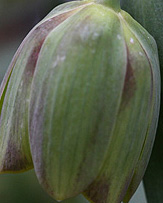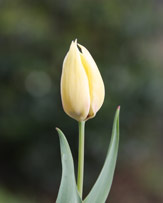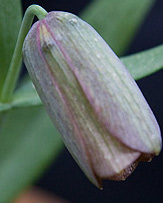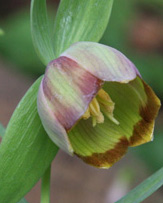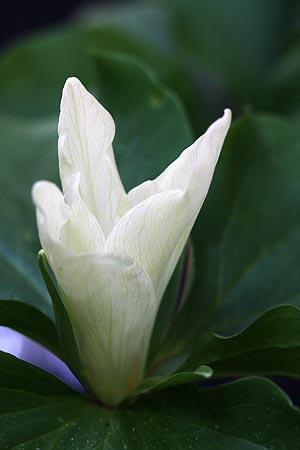
Trillium chloropetalum
For spectacular flowers in a woodland setting the Giant Trillium must be one of the best. Through winter Trillium chloropetalum pokes its nose above the soil, tempting us with promise of things to come. As spring comes around the dormant shoots burst open, large flowers followed by attractive foloage that lasts well into summer.
Flowering in mid to late spring, Trillium chloropetalum is a species that is easy in the garden, a little variable, with flowers colors of both red and white, also some yellow flowers, and with marbled foliage that also varies.
The flowers rise directly from the foliage, upright rather interesting in the closed form that they take.
Reaching around .4m in height these are a largish species with T. chloropetalum giganteum reaching even a little higher.
Where to plant Trillium chloropetalum
Although they will grow well in containers and you can buy some excellent large specimens like this at plant fairs, the giant trillium prefers to grow im light shade in the garden.
As with all Trilliums, this is a plant that likes its own company, it grows best when planted in its own area and in good rich soil. It is always best to prepare a 'trillium patch' before planting. Dig the area over well, add lots of compost, humus and leaf mold. Make sure the area is weed free. And then plant.
You will be rewarded with larger flowers, better foliage and faster clump formation, well worth the effort. These are a long lived plant in good conditions.
Trillium chloropetalum Care
Summer dormant these are an easy care plant in a woodland situation. Try a little leaf mould as compost in autumn and a good watering with a seaweed fertiliser in spring as new growth occurs.
If the plant sets seeds after flowering you can collect them, or simply allow them to drop where they are. This works well in helping clump formation.
Slugs and snails can be a problem
Trillium chloropetalum Cultivation
Division of established clumps, or from seed, from seed is where the variable nature of Trillium chloropetalum becomes apparent, and if you are looking for a particular foliage, division is best.
Often put forward as 'easy from seed' this may be true, however up to 7 years from seed to flower, so be patient.
If growing from seed, speed up the process, by stratifying using cold 2 months, warm 1 month and cold 2month using the baggie method. seedlings need to be left undisturbed for 3-4 years after planting out.
Trillium chloropetalum Summary
- Dappled Shade
- Slightly Acidic soil
- Well drained soil < li>Flowering mid spring
- Foliage green to mottled
- Slow to multiply however forms clumps over time.
You may also be interested in
